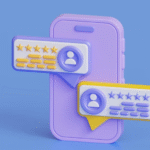Guide to Hybrid & Data‑Driven Testing Frameworks with Java/.NET ExamplesFrameworks

Establishing strong quality assurance procedures in software development begins with implementing a software testing framework. The power to choose the appropriate test framework can significantly enhance the efficacy of your testing efforts, whether you’re working as a single developer or part of a large team.
This will ensure that the product not only functions as planned but also delivers a seamless user experience. We have the answers you need if you’re unsure which test automation service is appropriate for you. You can enhance your understanding of frameworks and choose the most suitable option for your company with the aid of this tutorial.
Specifying Frameworks for Test Automation
Automated software testing has a systematic base thanks to test automation frameworks. It’s a collection of rules, resources, and procedures that specify how to structure, write, and run automated tests.
By providing a standardized methodology, frameworks guarantee uniformity and maintainability throughout projects. Typically, they consist of techniques for managing test data, coding standards, and result storage.
By preventing teams from having to write tests from scratch every time, this approach increases productivity and decreases redundancy. MuukTest and other well-defined frameworks can significantly enhance the quality and performance of your testing, inspiring you to achieve more in less time.
Data-Driven Testing (DDT): A Useful Method for Automating Scalability
As part of the automation testing services known as Data-Driven Testing (DDT), test scripts are made to execute with various sets of input and expected output values that are kept outside of the test logic.
DDT enables the import of input values from external sources, such as databases, Excel, CSV files, JSON, XML, or other formats, rather than hardcoding them into the test scripts. In addition to improving maintainability, this division of data and logic enables testers to expand their testing effectively.
Essential Elements of Data-Driven Evaluation
The separation of test logic and test data is one of DDT’s most crucial components. This implies that no matter how many distinct input values you wish to test, the fundamental test script stays the same.
Suppose you need to test your application against 100 different data combinations. In that case, you can construct a single script that reads all 100 combinations from an external data file rather than writing 100 test cases.
Scalability and reusability are two more essential characteristics. With the data-driven structure in place, scaling your tests is easy and only requires adding more data sets. By allowing the reuse of test scripts across modules, projects, or even apps, the automation framework as a whole becomes more effective and manageable.
Advantages of DDT
- Adding New Test Cases Is Simple: Adding a new row or entry to the data source file is all that is required to add a new test case. There is no need to alter the current script, as this reduces the possibility of errors and logical inconsistencies, providing a sense of reassurance and ease of use.
- Decreased Code Duplication: There is no need to create duplicate test cases for every input variation, as a single generic script can handle a variety of data scenarios. As a result, the codebase remains more organized and manageable.
- Improved Test Coverage: DDT contributes to more thorough test coverage by methodically testing a broad range of inputs. To check how the program responds to various scenarios, you can use normal, boundary, and negative test values.
Examples of Java and .NET Use Cases
Implementing DDT in Java-based automation typically involves using libraries like Apache POI to retrieve data from Excel and technologies like TestNG. For QA teams, these technologies facilitate the process of reading many data entries and feeding them into test procedures.
NUnit is a well-known testing framework in the .NET ecosystem that can interact with external data sources by utilizing features that allow test cases to pull data from databases or files, such as CSV. Effective CSV data management and parsing frequently involves the use of tools such as CSVHelper.
What is a Hybrid Framework?
A hybrid framework combines multiple frameworks, typically including keyword-driven and data-driven frameworks. By combining the best features of both strategies, this approach yields a testing environment that is both strong and flexible.
- Data-Driven Framework: This framework relies on test cases that utilize external data sources, including databases, Excel files, CSV files, and XML files. It is simple to update and maintain the test data because it can be changed separately from the code.
- Keyword-Driven Framework: By separating keywords that represent similar commands and functionalities, this framework accelerates automated testing. Excel and other external files contain these keywords and test data.
Flow of Hybrid Framework Execution
The execution flow of a hybrid framework in Selenium is a step-by-step process that includes the following actions:
- Test Information and Keywords Externalisation: By storing test data and keywords in external files, the script becomes more flexible and general.
- Function Library: Consists of reusable functions that carry out standard web application tasks. The test case design template invokes these functions to perform specific tasks.
- Template for Test Case Design: Test cases are structured according to this framework. It performs the test procedures sequentially after reading them from outside sources. Every test step maps to a function in the function library and represents an action (click, enter text, etc.).
- The Object Repository: A fundamental concept in the hybrid framework is a single location for managing and storing all site elements, including buttons, text fields, checkboxes, and more. This repository makes scripts easier to update and maintain as the application’s user interface changes. It serves as a centralized database of all elements used in the test cases, thereby enhancing the maintainability and reusability of the scripts.
- The Driver Script: A key component in the hybrid framework, it serves as the starting point for running tests. It reads the test cases from an external source (such as an Excel file), initializes the WebDriver, and starts each test case. This script orchestrates the entire testing process, making it a crucial part of the framework’s execution flow.
Java and .NET Hybrid Examples
A Java hybrid testing framework often utilizes the Page Object Model (POM) to maintain clean, reusable UI interaction code, Apache POI to read external data (such as Excel files), and TestNG to execute tests.
Usually, the framework has distinct folders for data files, page objects, utility functions, and test scripts. The test pipeline utilizes TestNG to run assertions, POM classes to interact with web elements, and Excel to read input data.
A hybrid framework in .NET might use external data files, such as CSV, for input, SpecFlow for BDD-style readability, and NUnit for test management. Features, step definitions, aids, and data sources are all part of the folder structure.
Conclusion
The ideal roadmap for software test automation services is a testing framework. Numerous advantages come with this set of rules, including reduced human interaction, reusable test scripts, and quicker fault discovery.
Because there are numerous different kinds of frameworks, it can be challenging to determine which one is best suited for the project. Understanding the potential frameworks and evaluating their benefits and drawbacks will help you select the ideal automation testing company for your specific needs.

A Friendly Guide To The Different Kinds Of Waste

What Foreign Companies Need to Know About Employee Benefits in Mexico

What is an MVP and Why Every Startup Needs One

Accelerating drug discovery through the DEL-ML-CS approach

AI in Marketing Is No Longer a Buzzword — It’s the Strategy

Why the LG 34WQ75C-B UltraWide QHD Curved Monitor is the Ultimate Upgrade for Work and Play?

How to Choose the Right Email Organizer: Features to Look for in 2025

Never Lose a File: The Art of File Server Backup








